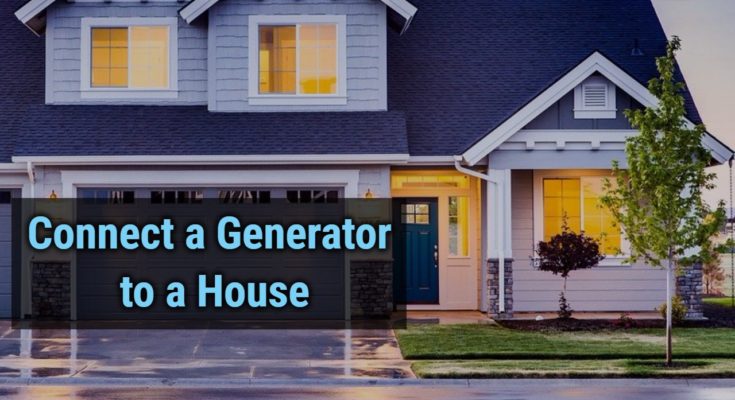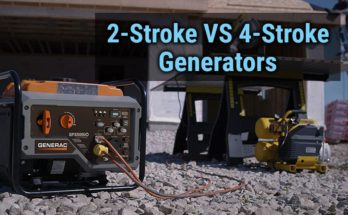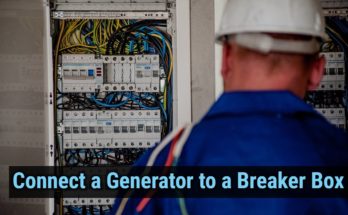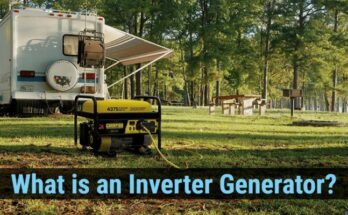Power outages are totally random, and you never know when you will be left without electricity. There can be many reasons for a power outage, and if there are some faults with the electrical system, then to repair them, the utility grid will be down.
Another reason can be an intense natural disaster like a hurricane or a tornado, which is left behind fallen trees and electricity poles.
Whatever the reason, the electricity is gone; at this time, the other reliable source of power is portable generators. They are small and lightweight equipment that can ride you through this power outage by keeping the essentials of your house running.
It will keep the house illuminated and keeps the food from spoiling by powering lights and the refrigerator. But, if you want to use high-power demanding appliances, then that won’t be possible.
The safest way to connect a portable generator to a house is through a transfer switch. In this article, we will explain how you can power your house with a generator using an automatic and manual transfer switch.
An alternate way is to connect a few appliances through an extension cord, but you will be able to run a few lights and lamps only. While with a transfer switch, it gets connected to the electrical circuit of your house, making it possible to power anything you want. Just don’t let it get overloaded.
What is a Transfer Switch?
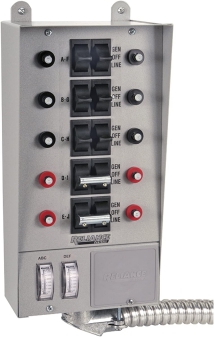
A transfer switch is a device that makes the connection between the electrical circuits of the house and a generator. When the utility power goes out, a generator will need to be connected to the electrical circuits of a house.
A transfer switch will isolate the utility supply before connecting the generator to the house. This will eliminate two serious problems.
First, a utility grid is disconnected from the house, so there won’t be an issue of back feeding. Back feeding is a phenomenon where the power from a generator flows back into the electrical lines.
Second, when the generator is supplying power, and the power comes back, then many appliances will be receiving the power from a generator and also from a utility supply; this can damage them. That won’t happen when you have a transfer switch installed.
To install the transfer switch, you will need professional help.
There are two types of transfer switches available in the market, the automatic transfer switch (ATS) and manual transfer switch (MTS). An automatic transfer switch automatically connects the generator and disconnects the generator when it detects a power outage.
Whereas in the case of a manual transfer switch, you will have to do everything manually when the power goes out, this makes them a little inconvenient, but they are more cost-effective than the automatic transfer switches.
How to Connect a Portable Generator to a House?
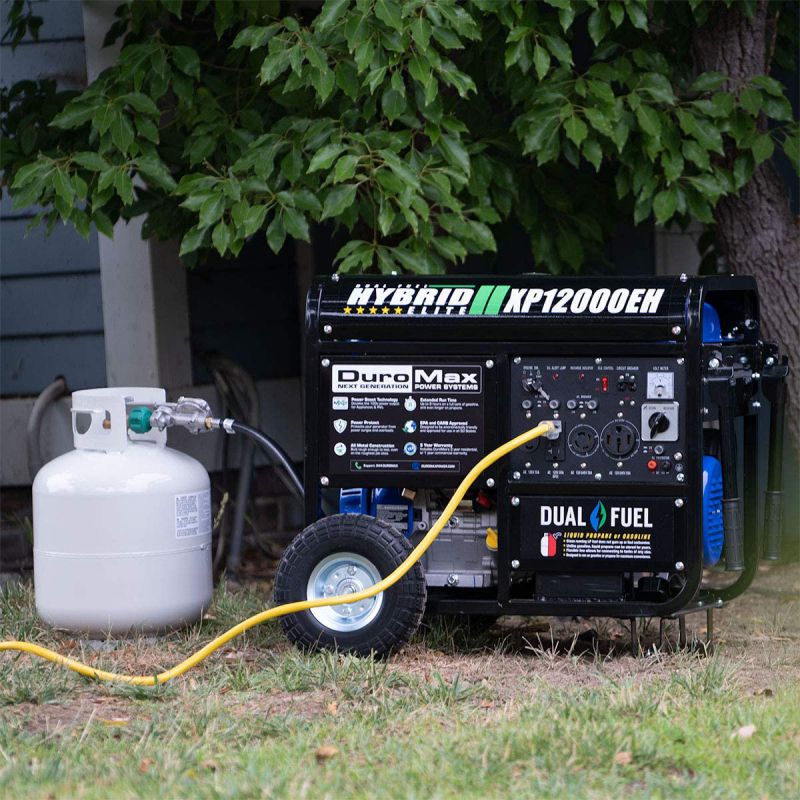
A connection of a generator to your house, as mentioned, can be done by installing a transfer switch. A transfer switch should be of proper rating about generator power rating. The installation needs to be done by a professional. If it is not, then your home won’t be covered under the insurance in case of any fire.
The connection of a generator to the transfer switch is realized through a box type inlet hook up, a power cord, of which one end connects to the portable generator and the other to this hook-up box.
It carries the power from the generator to the box, and from there, it flows to the transfer switch and the appliances of a house. The connection of an inlet box and transfer switch is made from durable wires of different colors.
Now, for the automatic transfer switch, the transition from electric power to generator power will be automatic.
As the grid power vanishes from the main panel, the ATS detects this absence of power and connects the generator to the house. But, a portable generator cannot power all the appliances of a house, so circuits that need to be powered during an outage should be properly chosen.
A portable generator can be left connected all the time to the transfer switch, and this will keep you from making a connection in the dark if the outage is at night. Also, if you don’t want to wander around in the dark, then it is a good idea to keep a connection cord besides a generator or a transfer switch.
For a manual transfer switch, before hooking up a generator to an inlet box, ensure the off position of all the breakers on the panel. Also, flip the switch of MTS so that the utility gets disconnected and the generator power gets connected.
More importantly, don’t ever keep your portable generator inside a house or a garage. It should always be placed outside, where sufficient ventilation for exhaust gases is available. In confined spaces, the exhaust gets accumulated; these gases are very dangerous if breathed in.
The summarized steps will explain the process you will need to perform for a safe connection generator through a manual transfer switch.
- The first thing to do is to make a connection from a generator to the inlet box.
- Then you will have to toggle all the breakers on the transfer switch to the off position.
- Now, when the generator is warmed up after a few minutes of starting, turn the main switch to the generator position on a transfer switch.
- Now, you can turn on the breakers of the circuits one by one, which you would like to power. Make sure you don’t overload the generator.
Can I Connect a Portable Generator to The House without a Transfer Switch?
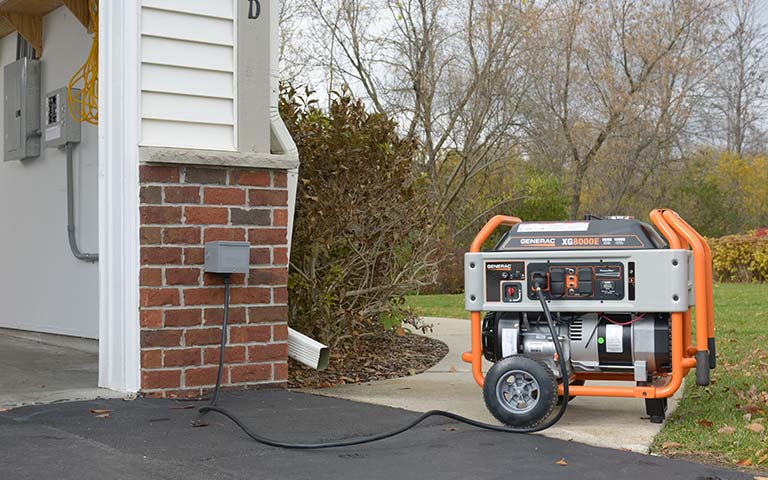
Yes, you can. Technically speaking, there is no need for a transfer switch to make a connection between the portable generator and the house. The alternative to a transfer switch is the use of an interlock switch.
The interlock switch is inexpensive and is also safe to use. But it is not recommended if you can install the transfer switch because a transfer switch has many benefits over an interlock switch.
To connect without a transfer switch, you will need an interlock kit, an inlet plug, wires, and a 2 pole circuit breaker.
To know how to do the installation, you can read our “How to Connect a Generator to a House without Transfer Switch” post where we have explained all the steps in detail.
Also, note that most standby generators come with a transfer switch by default.

